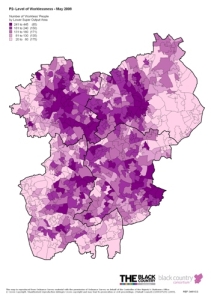Public sector employment has grown significantly in recent years across the UK and has been the key driver of the economy’s expansion. But proposals announced by the government to make £83bn worth of cuts in public sector spending are forecast to lead to the loss of up to 600,000 public sector jobs across the UK over the next 6 years, according to a study1 by Oxford Economics.
The West Midlands economy is particularly vulnerable to the impact of the cuts. Between 1998 and 2008 (latest available figures), the West Midlands saw the most significant increase in dependence on public sector employment in the country2.
The share of jobs accounted for by the public sector increased from 22% in 1998 to 27% in 2008, a rise of 5 percentage points, bringing total public sector employment to some 637,000.
We forecast that between 2010 and 2016 there will be a net loss of nearly 50,000 jobs across the West Midlands and, based on the ratio of the number of private sector jobs dependent on public sector spending and the associated supply chain nationally, a further 310,000 jobs are at risk at private sector firms directly or indirectly reliant on public sector spending3.
Continue reading →
0.000000
0.000000
Filed under: Birmingham, Black Country, City Region, Data, Dudley, Economy & Labour Force, Employment, Regional Data and Intelligence Network, Shropshire, Skills, Staffordshire, Stoke-on-Trent, West Midlands, West Midlands Regional Observatory, Wolverhampton | Tagged: economy, employment, job cuts, jobs, labour market, local authorities, public sector, spending review, West Midlands | Leave a comment »



 Inward investment is usually spread reasonably evenly between the West Midlands metropolitan areas and the shire counties. In 2009/10 the shire counties attracted the majority of inward investment projects (55%). See left.
Inward investment is usually spread reasonably evenly between the West Midlands metropolitan areas and the shire counties. In 2009/10 the shire counties attracted the majority of inward investment projects (55%). See left.
 This guest post was contributed by Christopher Styche from the
This guest post was contributed by Christopher Styche from the  The government is making £3 million available to help areas hardest hit by the recession find creative ways to reduce the negative impact empty shops are having on the high street.
The government is making £3 million available to help areas hardest hit by the recession find creative ways to reduce the negative impact empty shops are having on the high street.
 The
The  The
The  The
The  The West Midlands is the first English region to produce a
The West Midlands is the first English region to produce a 

